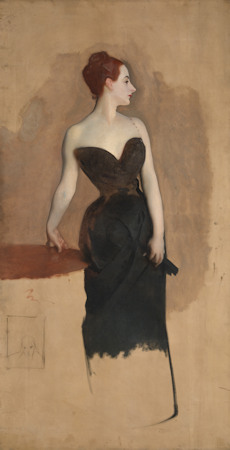
Vienna: home of Klimt. And the main home for his works in the city is Belvedere. The Klimt. Inspired by van Gogh, Rodin, Matisse… exhibition at Lower Belvedere reveals more about Austria’s most famous artist.
- Klimt’s evolution & the artists who impacted it
- Around 100 works on display
- Intriguing juxtapositions!
- Includes art by many international greats
- Cooperation with the Van Gogh Museum
- All displays in English and German
- Runs Feb 3, 2023 – May 29, 2023
- See also:
- Lower Belvedere palace info
- Current art exhibitions in Vienna
Inspired by Van Gogh, Rodin, Matisse…

(Gustav Klimt, Water Serpents II, 1904/1906–07; press photo; private collection, courtesy of HomeArt)
Quis custodiet ipsos custodes? Who will guard the guards themselves?
And, if we might adapt that a little: who inspires those who inspire?
An exhibition at Lower Belvedere seeks to answer that second question for the great Gustav Klimt.
Experts at Vienna’s Belvedere and Amsterdam’s Van Gogh Museum identified those artists and works Klimt would have encountered through travel, visits to exhibitions (at home and abroad), and similar.
Their results combine with existing knowledge to grant us an understanding of just who (and what) impacted Klimt’s approaches and output.
Klimt. Inspired by Van Gogh, Rodin, Matisse… turns this understanding into an art exhibition, where we see direct comparisons of his paintings with works known to have influenced him. The exhibition arrived in Vienna following a 3-month residency at the Van Gogh Museum.

(Gustav Klimt, Judith, 1901; press photo courtesy of and © Belvedere, Wien.)
The result is remarkably intriguing and delivers a triumvirate of artistic joy…
1. Numerous works by Klimt, obviously.
These include an extraordinarily rare highlight from a private collection: Water Serpents II (pictured at the top of the article), which carries an insurance value of US$300 million. You can get a lot of Klimt fridge magnets for that amount.
2. Paintings and other items by various giants of their times and genre, like van Gogh, Monet, Whistler, Rodin, Alma-Tadema, Matisse, Macdonald Mackintosh, Munch, and others.
3. The intriguing insights that come from a dialogue between the two; a dialogue allowing us to trace Klimt’s artistic evolution and understand the context of that change.
The exhibition begins with Klimt’s first professional efforts and leads us through his stylistic journey from photorealism into the more colourful and abstract.
The final painting proves a fitting end: The Bride is an unfinished work that draws in elements of Klimt’s approach to colour, ornamentation and the human form. A Klimt amalgam, you might say.
The juxtaposition of works adds a special touch to proceedings.
So we see motifs, styles, techniques and/or framing in a piece predating a neighbouring Klimt creation, where the latter obviously draws on the earlier work (which he would have seen or at least known about). For example:

(John Singer Sargent; Study for Madame Gautreau from c. 1884; Tate, London, Presented by Lord Duveen through the Art Fund 1925)

(Gustav Klimt, Portrait of a Lady, 1894; permanent loan from a private collection; photo: Johannes Stoll / Belvedere, Vienna)
We discover, for example, how Alma-Tadema’s modernist renditions of classical antiquity relate to Klimt’s Burgtheater ceiling paintings.
Or how Margaret Macdonald Mackintosh’s embroidered panels might have started Klimt on a journey toward more abstract approaches and directly influenced the Beethoven Frieze.
Or how Monet’s 1897 Branch of the Seine near Giverny (Mist) might have influenced Klimt’s 1899 A Morning by the Pond.
Or…well, you get the idea.
I found myself initially a little disappointed to discover Klimt’s genius came not entirely from within. But that feeling soon faded.
As you follow Klimt on that artistic journey, you appreciate his ability to apply his experience of the works of others to his own output and development. But, more importantly, to add that unique Klimt touch. One that makes his art instantly recognisable.
So still a genius in a genre of his own.
Dates, tickets and tips
Enjoy Klimt and contemporaries from February 3rd, 2023 to May 29th, 2023. Any ticket to or including Lower Belvedere allows access to the exhibition.
The exhibition is proving extremely popular: I’d suggest going early in the day to avoid any possibility of a wait caused by a full gallery.
If you’re in Vienna for this Klimt exhibition, you might want to explore some other locations relevant to his art or life.
For example, walk through Lower Belvedere palace and into the adjoining orangery (included in a Lower Belvedere ticket) for the exhibition commemorating 300 years of the institution’s history.
The exhibition featured at least one Klimt painting last time I checked, as well as a handwritten letter from him about The Kiss. On that subject, cross the gardens to Upper Belvedere for their permanent exhibition featuring that very painting and other Klimt masterpieces.
And another good place to see his works is the permanent exhibition of the Leopold Museum, who actually loaned a couple of pieces for the Klimt. Inspired… exhibition.
How to get there
Check the directions article for reaching Lower Belvedere.
Address: Rennweg 6, 1030 Vienna